In September of 2006, my husband and I purchased 17 acres of class-1 farmland with water rights just 13 miles from our market. The land was perfect for us and yet completely “bare” — no buildings or infrastructure of any kind. Not even a well! There had been a house and a shop at one time, but they had been removed years before we bought the land.
So, as new farmers in our mid-20s, we had before us an amazing (and daunting) task of creating our farm’s infrastructure from scratch with limited resources (time and money). Where would we put buildings? What kind? How quickly?

That first fall, we started with the most basic piece of the puzzle: we built a simple 12x20 three-sided shed that we used for storing some of our farm supplies and for staging other building projects over the first rainy winter. Next, we learned how to install a septic system. Then, we built a small house for ourselves (a carriage house style design with a one-bedroom apartment upstairs and a “garage” below for farm use). And, then in the following spring, we built a small, very flimsy greenhouse for starting seeds.
The building process has continued ever since. We’ve built numerous pole buildings, shed roofs, permanent greenhouses, walk-in coolers, a cabin, and even remodeled our house. We also paid to have a well put in and have set up our irrigation system a few different ways.
Living and farming with the results of our choices has taught us many lessons about how we approach infrastructure. Perhaps lesson number one is that we are never done. Certainly, some choices stick around forever, but we are always tinkering and improving with our past experiences in mind.
I thought that some of our observations over the years might be useful to others — especially anyone starting from scratch. But even folks who already have a few buildings, roadways, and other infrastructure laid out on their farm may benefit from thinking about those spaces and making them more intentional and/or adding to them. How we interact with a farm as a whole and can have a huge impact on efficiency, morale, comfort, and safety.
So, here are a few of the lessons that we have learned about farm spaces and functions:
Research relevant laws
Before you begin any project, you need to understand the zoning or development laws that may affect your property. We are fortunate to live in Oregon, where there are exemptions made for specific types of farm buildings, allowing us to build some structures without necessarily pulling expensive permits and having inspections.
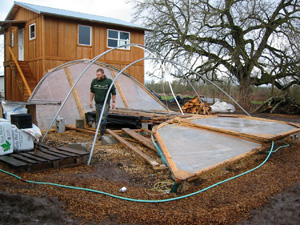
We did have to work with the county for everything related to our house, of course, and even with farm structures there are some permit requirements (for example, any plumbing or electrical projects still need to be inspected), so it’s useful to know what is allowed before you start dreaming of building sheds or rewiring your existing barn. Even if you plan to disregard said laws, they are important to know.
You can find out this information from your local planning office (county level if you are outside city limits; city if you are inside city limits). A word to the wise when approaching planners with questions: do not reveal your plans unless you already understand the law and how it affects you. It’s best to ask vague hypothetical questions at first — possibly even over the phone. Also, be really considerate and friendly. They like people who are nice, and it’s helpful to have your local planners and inspectors feel friendly toward you. They have a lot of useful information to share. Our inspectors have taught us many things about construction and code over the years.
Something versus nothing
Here’s a lesson for folks who are renting land: it may still be worth it to build something if you need it (a sturdy shed roof over a wash station, for example). We have known many farmers who rent land and have been reluctant to invest any time or money in infrastructure, even when they have been on that land for years and will most likely remain there for years. Building projects seem quite permanent, but effective projects can be done in less than a week with not too much money. So, unless your lease prohibits construction, it can be worth it to build something simple that you might someday leave behind. (Check with the landowner about your plans first!)
For example, before buying our 17 acres, we started our farm on one acre that we rented for a year. We wanted a covered space to host our CSA pick-up on farm, so we built a little shed roof pole structure (solid back and roof but open on three sides). It took us about two days to build, and we mostly used scrap materials. We bought new pressure treated poles but used pieces of roofing and plywood we found on site. It was sturdy and very effective at blocking wind and providing shade, and we didn’t have to worry about it again. In contrast, a large tent or canopy probably would have cost about the same upfront and then required maintenance on a weekly basis and been less effective in harsh weather.
Good is better than perfect
This is a similar lesson that applies to farmers who own their land. Let’s say you need a shed. The reality ofconstruction is that you could spend almost infinite amounts of money on any project if you seek out the best of everything — even a shed. We have seen farmers wait and wait to do projects because they want something quite grand and don’t yet have the time and money to pull it off. In the meantime, they may be losing money or hurting morale on the farm because there is an unmet infrastructure need.
Sometimes, you just need to do it — build the greenhouse or shed or whatnot that you can afford now rather than waiting for the perfect version.
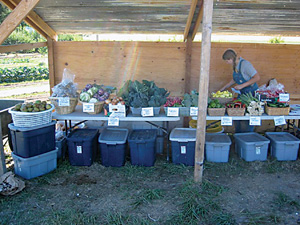
In our experience, doing what we can do in a given season is a great way to learn what we really want without necessarily wasting lots of money and time. For example, our wash station has been revamped over five times since we first started our farm. Each time we build and then use a new version of it, we gain new insight into what we need for efficiency, safety, and human comfort. Being okay with solutions that aren’t super permanent (or our ultimate ideal) has helped us continually improve as we do have more money and knowledge.
Temporary or permanent?
This may sound paradoxical, but now that I’ve told you to be okay with making do, beware that temporary solutions have a way of becoming permanent fixtures. For example, once you have a functioning wash station area, it’s hard to feel the pressure to improve it amidst the pressing work elsewhere on the farm.
This observation applies anywhere on the farm: with tools, systems, spaces, etc. But infrastructure can be especially daunting to upgrade later because of the higher costs of time and money involved.
So, even if you are compromising on your project, be sure that your infrastructure solution is sturdy or useful enough to last longer than you initially anticipate. I honestly can’t remember whether or not the first simple shed we built on this land was intended to be a permanent fixture, but seven years later it is still standing strong even though it was inexpensive to build at the time. This is because from early on we have favored simple durable materials — pressure treated 4x4s for posts, exterior grade plywood for walls, very inexpensive but durable metal sheet roofing, etc.
In contrast, we have seen makeshift projects on other farms involving tarps or greenhouse poly for walls or roofs. This works, but for a relatively small reduction in upfront price, the lifespan of the project is dramatically reduced. But, then again, we too have used tarps at times (for a roof over a wash station). These sorts of solutions work for a season or two, depending on the site and the use. (At least buy a high quality tarp!)
On a similar note, we have found that when we stop working on a project, it is “done,” whether it is truly finished or not. It is amazing how the farm and life can distract us from “almost done” projects for months, years, and indefinitely — especially if the project is functional as is (perhaps finished except for final caulking or painting). Hence, we have a partially sided house. This is an important lesson to consider if completion is a crucial part of your mental sanity or aesthetic preference — do not move on until you are truly finished. Or, change your expectations and live with a lot of “almost finished” projects.
Consider the elements
With any project, carefully consider the elements on your site. What might “make do” for several seasons on your farm (a tarp wall on a shed, for example), might get ripped to shreds in the first fall windstorm on our farm. Similarly, we don’t usually get heavy snow loads here, so it’s rarely a factor in how steep of a pitch we put on roofs, but somewhere else this might be much more important.
For us, the main considerations in building projects are movement of the sun, direction of the wind, and elevation (we are in a flood plain). We’re often building very simple structures with the goal of providing shade during the hot part of the day in summer and to provide a barrier to wind and driving rain in winter. On our farm, this means that it’s important to have walls to the south and west, but we can safely leave sides open to the east and north. Proper orientation is one of the factors that has allowed our first simple shed to continue being useful. Be aware of these factors on your farm, because they vary greatly based on region and individual site circumstances.
Flexibility wins
Really, the concept of farm “infrastructure” is so complex and vague. As farmers, how many different tasks do we perform that require “spaces” of some kind? How many random tools and vehicles do we need to store out of the rain? How many people will be working in these spaces at different times of the year? The answers are infinitely complicated and ever changing.
So, on our farm, we have always valued spaces that are endlessly flexible: simple pole structures, greenhouses, shed roofs, etc. We built a 24x48 pole building our second year on the farm, and for many years it simply stored tractors and equipment in the winter. But over time, we started carving out useful spaces in it by building interior walls and pouring slab concrete floors. It currently houses a walk-in cooler, an insulated dry storage space for winter squash, our wash station, an employee break area, tools, and more. But, we could easily change it tomorrow to fit shifting needs.
Similarly, we have an open-ended greenhouse that gets used for hardening starts in the spring and then becomes a space for curing onions in the fall and then for storing tractor equipment in the winter. Our desire to keep things flexible has also thus far prevented us from burying a water main for our irrigation system. We’re thinking of doing this soon, but up until now, we have preferred the changeability of above ground mainline pipes.
Early on in our farming experience, we thought we’d “get it all figured out” eventually and things would work more or less the same every year, but that hasn’t been the case at all. We’re constantly changing and fiddling with things as we expand and diversify. We are so grateful for the flexibility of the spaces we have created and the systems we have established. We can change things without feeling like we are backtracking or undoing our work.
Basic construction skills
When we started our farm, I had no construction skills, and my husband had a few years of experience with plumbing and general construction but still felt like a novice. However, by doing the work ourselves on all of our projects, we have learned tremendously useful basic construction skills: framing, wiring, plumbing, flat concrete work, etc. We are so glad that we took the time to learn them on the first few projects, because our ability to continue doing work ourselves has saved us tens of thousands of dollars in labor and allows us to do the work exactly as we want it (which is often simpler than what a contractor might set as a goal) and on our own timeline (often rushed).
We are also glad we had the experience of building our house ourselves, which was permitted and inspected, since we learned a lot about the purpose behind building codes and how they relate to safety. We think of ourselves as “get ‘er done” builders (not much is pretty out here, and projects go up fast), but it is very important to us to have our working spaces be safe and durable.
Certainly not every farmer needs to master the entire range of skills involved in construction, but being willing to learn some skills can make future infrastructure projects feel a lot less daunting and expensive to consider.
A few last pieces of wisdom
They don’t warrant whole sections, but here are a few more observations we’ve had over the years:
When it comes to field edges and infrastructure areas, mowing is the easiest form of long-term management. Set things up to allow for your tractor to mow these spaces.
Piles happen. I thought they wouldn’t, but they do. Be careful where you put something down, because it will attract detritus: broken irrigation pipes, scrap metal, extra lumber, empty start flats, etc. If possible, designate areas on your farm for unsightly piles that are out of sight from neighbors, your house, and your customers.
Don’t cut corners on greenhouse construction. We had four makeshift greenhouses fall down in four years before we built really sturdy high tunnels with legs set in concrete. For us, they have been worth it.
Keep it all simple. Whatever this means to you, keep things simpler than you initially anticipate. Building infrastructure is one thing — maintaining it is another. Don’t set yourself up for constant stress because you have too many buildings to take care of or too many complicated roadways to mow.
We have learned to highly value pole building kits and pre-made trusses (built to order) — they’re not so artistic, but they’re easy to put up, inexpensive, and strong.
There is no one right way. What has worked on our farm may only partly work somewhere else. We’ve seen very creative solutions on other sites, including truck trailers converted into workspaces, shipping containers turned into employee housing, and more. Your solutions may be surprising and novel!
It is okay to make mistakes. Even with permanent buildings. As with everything in farming, it is crucial to acknowledge mistakes and fix them. Don’t let fear of mistakes paralyze you. This is why our farm’s setup is constantly changing as we realize there are new needs or that we can do things better.
While it has certainly been expensive and stressful at times, building our farm’s infrastructure from scratch has been an incredibly fun and rewarding experience for my husband and me. I know it’s not usually the part of farming interns dream about, but intentional infrastructure is a vital part of an effective farmscape. Ultimately, build it well, as you can.
Katie Kulla and her husband Casey operate Oakhill Organics in Dayton, Oregon. You can read more about their farm at www.oakhillorganics.org.

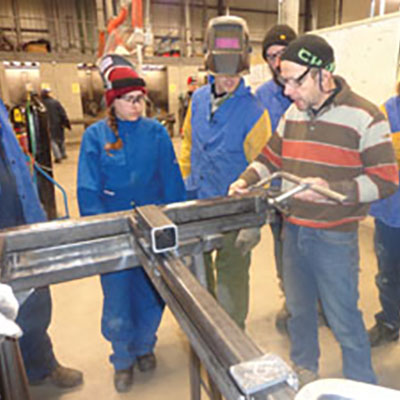

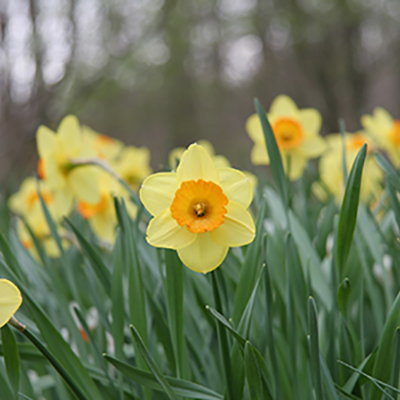
 Phenology is the study of recurring plant and animal life cycle changes in relation to the weather. Some changes are temperature-dependent, not calendar-dependent. The opening of some buds and the emergence of some insects from the ground are related to the accumulated warmth of that season. It isn't just superstition that some events occur simultaneously every year, but on dates that change from year to year. It is the result of two events being triggered by the accumulating warmth having reached a certain threshold. It's about what is happening, not a premonition of what will happen based on the width of woolly bear caterpillar stripes!
Phenology is the study of recurring plant and animal life cycle changes in relation to the weather. Some changes are temperature-dependent, not calendar-dependent. The opening of some buds and the emergence of some insects from the ground are related to the accumulated warmth of that season. It isn't just superstition that some events occur simultaneously every year, but on dates that change from year to year. It is the result of two events being triggered by the accumulating warmth having reached a certain threshold. It's about what is happening, not a premonition of what will happen based on the width of woolly bear caterpillar stripes!

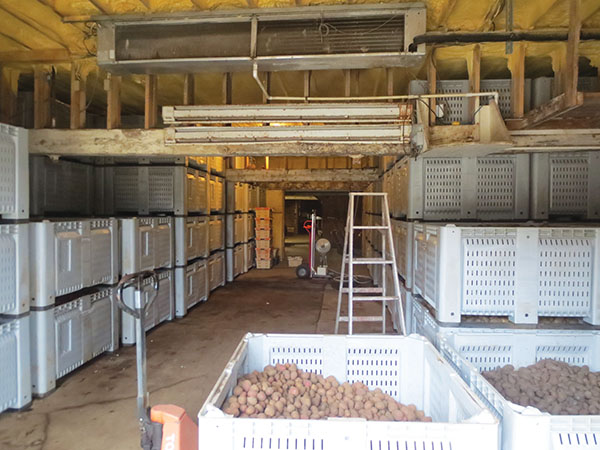 This article outlines designing and building a facility for long-term vegetable storage. A well-designed storage facility enables you to store high-quality vegetables many months after harvesting and thus access lucrative markets starved for local produce during the winter.
This article outlines designing and building a facility for long-term vegetable storage. A well-designed storage facility enables you to store high-quality vegetables many months after harvesting and thus access lucrative markets starved for local produce during the winter.